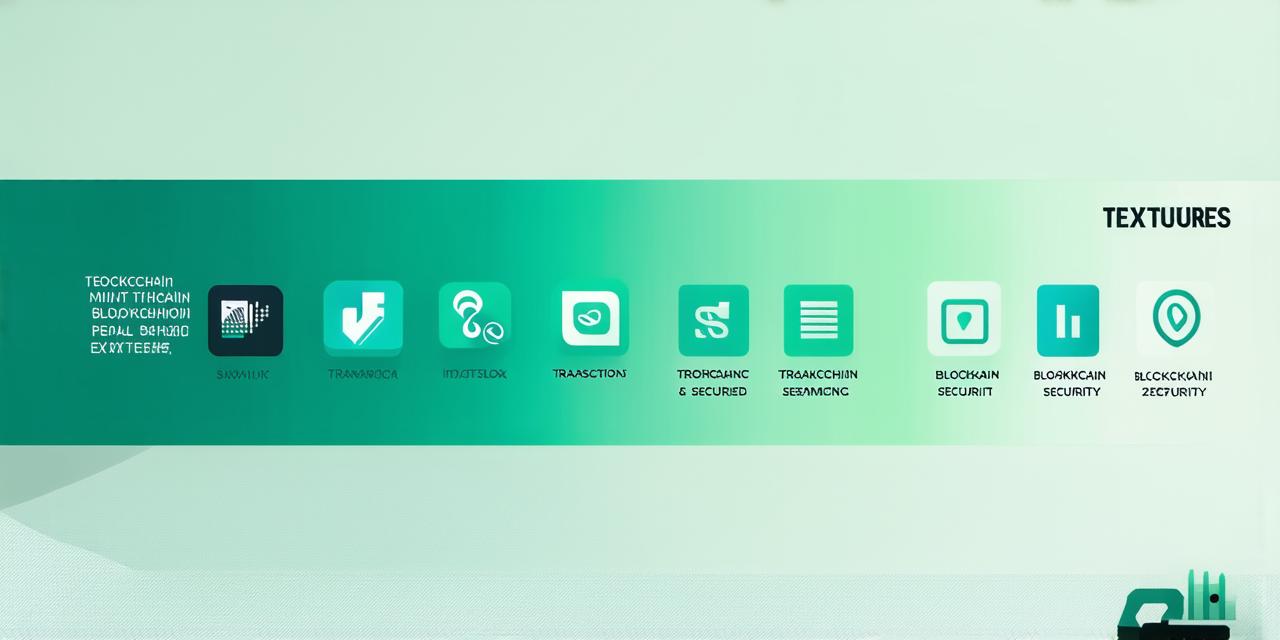What is Practical Blockchain?
Practical blockchain refers to the implementation of blockchain technology in a specific industry or use case. In other words, it’s the practical application of blockchain that solves real-world problems and adds value to businesses and consumers alike. While there are numerous potential applications of blockchain, not all of them are equally practical or feasible. To understand what practical blockchain means, we need to examine some of its most promising use cases.
Supply Chain Management: A Practical Blockchain Application

One of the most well-known and practical blockchain applications is supply chain management. Blockchain technology can be used to create a transparent and secure ledger system that records every transaction in the supply chain, from raw materials to finished products. By using blockchain, businesses can track shipments, verify origin and quality, and prevent fraud and counterfeit goods.
A popular example of blockchain in supply chain management is Walmart’s Food Traceability System. The system uses blockchain technology to track the origin and movement of food products through the supply chain, from farm to store shelf. By providing consumers with real-time access to this information, Walmart aims to increase transparency and build trust in its food supply chain.
Another example is Maersk’s TradeLens platform, which uses blockchain technology to digitize and streamline the shipping and logistics industry. The platform allows shippers, carriers, customs brokers, and other stakeholders to share information securely and transparently, reducing the risk of errors, delays, and fraud.
Smart Contracts: A Practical Blockchain Application
Smart contracts are self-executing digital agreements that can be programmed to automatically execute when certain conditions are met. They are a practical blockchain application that can be used in various industries to automate and streamline processes, reduce costs, and increase efficiency.
One of the most well-known smart contract applications is Ethereum’s decentralized finance (DeFi) ecosystem. DeFi uses smart contracts to enable peer-to-peer lending, borrowing, trading, and other financial services on a blockchain network. By eliminating intermediaries and automating processes, DeFi platforms can reduce costs and increase transparency, making it easier for individuals and businesses to access financial services.
Another example is the insurance industry. Smart contracts can be used to automate underwriting, claims processing, and policy issuance, reducing the risk of errors and fraud. They can also enable more innovative products and services, such as parametric insurance that pays out automatically when certain events occur, such as natural disasters or pandemics.
Identity Management: A Practical Blockchain Application
Identity management is another practical blockchain application that has the potential to revolutionize various industries. By using blockchain technology to create a secure and decentralized identity system, businesses can reduce fraud, increase security, and improve user experience.
One example of blockchain-based identity management is Civic. The platform uses blockchain technology to enable individuals to control their own digital identity, without relying on centralized authorities such as governments or social media companies. Users can verify their identity using various methods, including biometric data, government-issued documents, or other trusted sources.
Another example is uPort, a Swiss-based blockchain platform that enables individuals to control their own digital identity and personal data. The platform allows users to securely store and share their personal information with businesses and organizations, while retaining control over who has access to their data.
Limitations of Practical Blockchain Applications
While practical blockchain applications offer numerous benefits, they also have some limitations that need to be considered. One of the main limitations is scalability. Blockchain networks can become slow and congested when there is a high volume of transactions, which can affect performance and user experience. To address this issue, businesses need to carefully design their blockchain architectures and choose appropriate consensus mechanisms.
Another limitation is interoperability. While blockchain technology offers the potential for seamless integration across different industries and systems, achieving true interoperability can be challenging due to differences in protocols, standards, and regulations. To overcome this challenge, businesses need to work together to develop common frameworks and standards that enable seamless communication and collaboration.
Finally, practical blockchain applications also require significant investment in technology, infrastructure, and talent. Building a successful blockchain application requires specialized skills and expertise, as well as significant resources and funding. Businesses need to carefully evaluate their use cases and assess the feasibility of investing in blockchain technology before committing to a project.
Conclusion: Practical Blockchain Applications and Limitations
In conclusion, practical blockchain applications offer numerous benefits for businesses and consumers alike. By solving real-world problems and adding value to various industries, blockchain technology has the potential to transform the way we live, work, and interact. However, practical blockchain applications also have some limitations that need to be carefully considered, such as scalability, interoperability, and investment requirements. To fully realize the potential of blockchain technology, businesses need to adopt a strategic approach that balances innovation, risk management, and sustainable growth.
